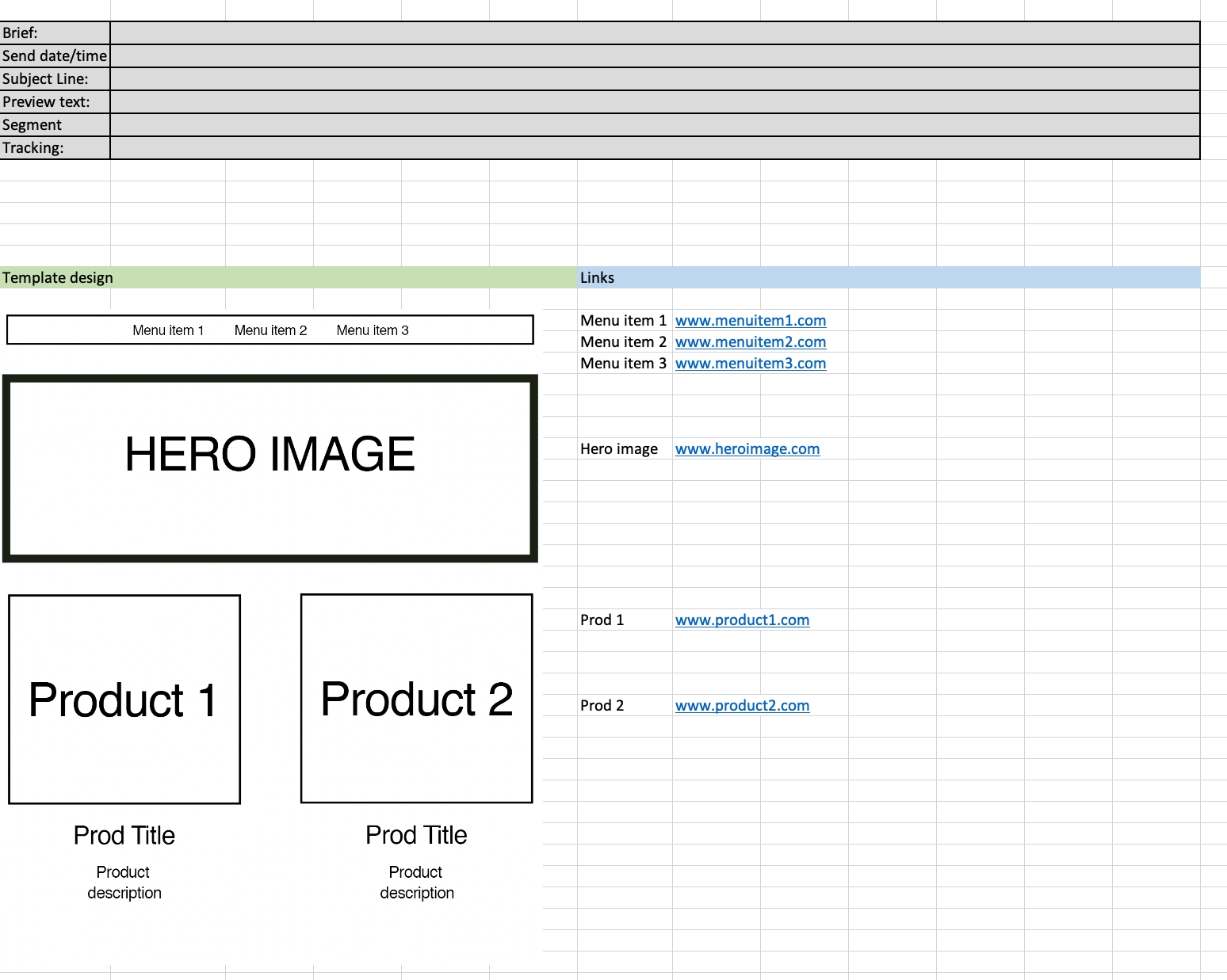Time is money, right? And it’s so much quicker to write “the email” than it is “2024‑06‑13 – US – Loyalty members – jackets mailer”.
But is everyone who reads the message guaranteed to know, specifically, which email is being referred to? Probably not.
Specificity is an investment
It’s easy to be lazy when typing. Decades of text‑messaging and social media have encouraged brevity. Often we’ll skip words entirely and opt instead for digital hieroglyphics like 💯 or 🙌.
In the workplace, however, lazy communication is a problem. Misinterpretations and misunderstandings lead to errors. Errors cost time and money.
Initial detail is the pre‑emptive remedy. It may take a little longer to write crystal‑clear instructions, but the time saved in the long run is an invaluable payoff.
As a bonus, your correspondence history becomes more searchable. That’s handy when the need arises to trawl through old messages.
Get to the point
An excessively polite, near‑submissive tone plagues a lot of communication in the modern workplace. Euphemisms and other softeners tend to obfuscate the true meaning. Vague communication is bad communication.
Don’t ask: “I just want to check the ETA on the display ad design?”. Say: “we need the display ad by 3pm, please”. Succinctness is a world away from rudeness. If anything, padding and softening inadvertently demonstrates less respect, not more. Sensibilities are rarely so delicate.
Stick to the subject
Conversation about Thing A should remain in the thread about Thing A. If someone starts talking about Thing B in there, the convo is muddied.
This ties in with the concept of specificity. If you send an email message on the topic of “tomorrow’s promotion”, that will very quickly become today’s promotion, and then yesterday’s promotion. Good luck finding that message again in the future.
New is the new old
Good communication doesn’t only pertain to messages sent between colleagues. Naming conventions and folder structures can also benefit greatly from clarity and consistency. I can’t tell you how many times I’ve picked up an existing project, only to find an incomprehensible dumping ground of files.

Relative terms, most notably new, are to be avoided. New is only new until the next version comes along, at which point the label becomes a misnomer. Better to go with version numbers than new, really new, and really really new.
Tools of the trade
Email isn’t the only kid on the block. Communication and organisational tools like Microsoft Teams, Slack, Alfred and Monday.com are popular. Their functionality varies, but they all have one thing in common: they can make your life easier.
Some communication‑enhancing features include:
- Projects: Keep discussions automatically on‑topic and save yourself the bother of referring to project names over and over again.
- Pinned messages: Need to make everyone aware of some important changes? Stick a note to the appropriate channel.
- Reminders: Want to ask Dave something when he comes back from holiday? Set yourself, or him, a reminder.
- Message templates: If you repeatedly send similar messages, a customisable message template is just the thing.
Good brief!
Project briefs (and lists of changes) deserve attention to detail. The more information provided up‑front, the fewer questions asked later. Oh, and watch out for instruction intertwined with content. That’s a messy crossover that happens surprisingly often.
Write it down
I’m a huge fan of documentation. We’ve all seen people leave companies and take important knowledge with them. None of the remaining employees are familiar with a particular project, and nothing was ever put down in black and white. Cue a mad scramble to piece together clues and figure it out.
Communication processes can and should also be documented. By giving your teams a communication framework to operate from, everything is consistent, and the machine runs smoothly.
Corporate jargon vs plain English
We’re all familiar with the comically stilted and metaphor‑laden nature of ‘business speak’. Many of us consider it a pet peeve, and yet it continues to flourish in the workplace. Many perfectly good plain English phrases have been permanently replaced by strangely artificial and sometimes grammatically‑incorrect alternatives.
While it’s true that specialist fields develop unique lexicons, corporate speak isn’t really that. And it comes with problems. Often the wording is fancier but less specific than the plain English equivalent. I’ve seen it cause non‑native speakers to question the rules of English that they had so carefully learned.
The history and psychology of corporate jargon is a topic worth reading about. It’s not likely to go away any time soon and there’s a fair amount of pressure to talk the talk. But those who have the courage to break free may be rewarded with a smoother, more authentic, more understandable communciation experience.
A little too creative?
Creative is an adjective. Or at least it used to be. In a modern business context, it has been repurposed as a noun.
What does it mean? Well, that depends. Not only is the nounified creative used to refer to a piece of design work, but also to the designer who produced it. Assuming that the word also retains its original adjective functionality, you might just see a creative creative creating a creative creative.
It’s unfair to point the finger exclusively at the corporate world for this practice. Nouning is not a recent phenomenon, and neither is its cousin, verbing. Language changes naturally over time.
Change, however, does not necessarily mean improvement. The dictionary‑approved usage of literally to mean figuratively, for example, is quite blatantly a barrier to understanding. When the definition of a word is so blurry that its meaning can only be discerned through context and tone, that is surely a problem. Let’s not foster confusion.
Linguistic elasticity is wonderful for creative writing and liberating in informal everyday speech. But in a task-driven business environment, does it leave too much to interpretation?
It’s good to share bad news
Mistakes happen. We all make them. But we don’t always admit to them.
When things go pear‑shaped, and you just so happen to be to blame, it’s decision time: own up or attempt to bury it. The trouble with the latter is that most times, everyone else can quickly figure out what happened. That leads to tension and distrust. A mistake is an accident, but dishonesty is a choice. On the rare occasion when the truth is not so apparent, time is wasted investigating what went wrong.
An employee’s willingness to own up isn’t solely determined by their personality, but by the workplace environment. The focus should be on resolution and development, not punishment. A culture of openness and honesty takes the pressure off staff and reduces the chance of stress-based mishaps in the first place.
End transmission
Communication is considered a soft skill, but that term downplays its importance. Poor communication isn’t simply a nuisance. It’s a significant drain on a company’s resources, and a major source of stress for employees.
Every business, big and small, can benefit from a communication review. Unclog your company’s information arteries, and the rewards could be substantial.





